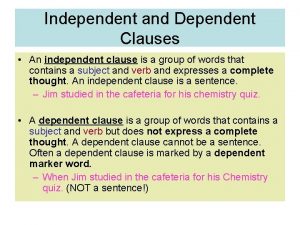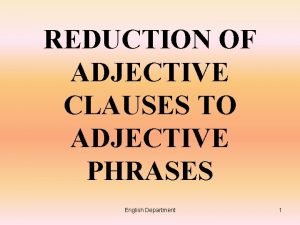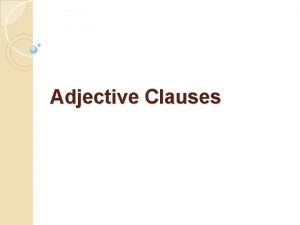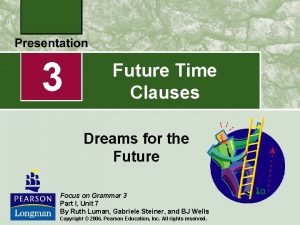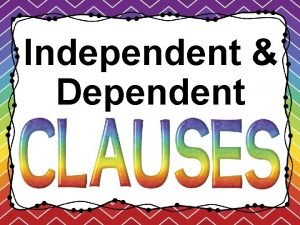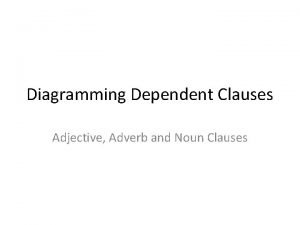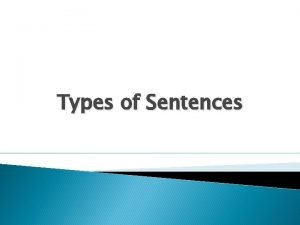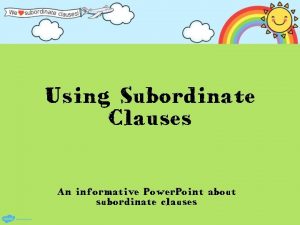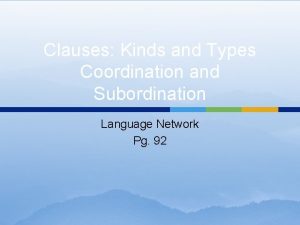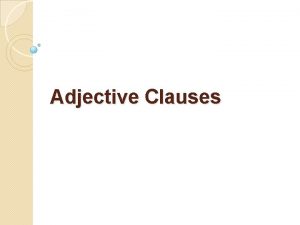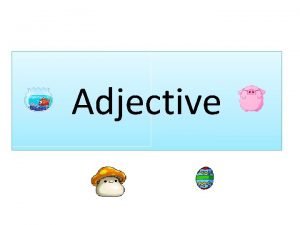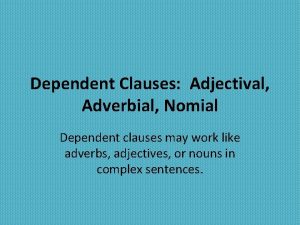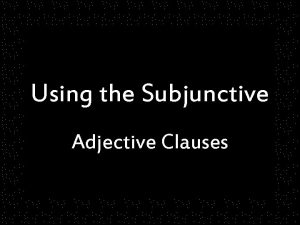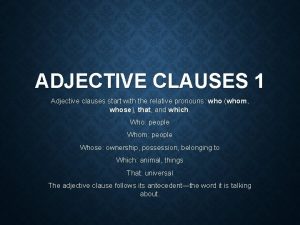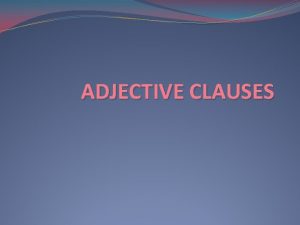Adjective Clauses Adjective Clauses l Is a dependent













- Slides: 13

Adjective Clauses

Adjective Clauses l Is a dependent clause l modifies (describes) noun or pronoun l tells “what kind” or “which one” l relative pronouns used l Who, whom, whose, which, that l where (sometimes)

Relative Pronouns l When an adjective clause is introduced by the words where , when, who, which, that, and whose, these are called relative pronouns.

Adjective Clause Formula l. Relative Pronoun (RP) l. Preposition (PREP) l. Clause + RP l. PREP + RP + clause

Modifying Nouns/Pronouns The dog that I found was clearly someone’s pet.

Modifying Nouns/Pronouns Mr. Shange’s truck, which was filled with eggs, blocked the road.

Modifying Nouns/Pronouns I waited for my friend, who had to stay late.

Modifying Nouns/Pronouns • Sometimes an Adjective Clause begins with a preposition & the latter is followed by the relative pronoun. I will soon hand out the paper on which you will place your answers.

Modifying Nouns/Pronouns • Sometimes a Prep. Phrase will “get in the way” of what the relative pronoun is trying to modify. Last year, we went on a trip to Hawaii that was the most fun we’ve ever had.

IDENTIFYING/NONIDENTIFYING l An IDENTIFYING clause contains information necessary to the sentence meaning l Not set off by commas l Follows a common noun l Uses “that” and other wh words as the relative pronoun

IDENTIFYING/NONIDENTIFYING l A NONIDENTIFYING clause contains information that can be omitted without affecting the sentence’s basic meaning l IS set off by commas l Follows a proper noun l Uses “which” as the relative pronoun

IDENTIFYING/NONIDENTIFYING E The ring that I lost belonged to my grandmother.

IDENTIFYING/NONIDENTIFYING , , N Marcella’s backpack, which split open at the seam, lasted only one semester.
 What is dependent and independent clause
What is dependent and independent clause Changing adjective clause to adjective phrase
Changing adjective clause to adjective phrase Using adjective clauses to modify pronouns
Using adjective clauses to modify pronouns Adjective dependent clause
Adjective dependent clause Dream future tense
Dream future tense 4.01 quiz: independent dependent and noun clauses
4.01 quiz: independent dependent and noun clauses Independent clause examples
Independent clause examples How to diagram adverb clauses
How to diagram adverb clauses Independent and dependent clauses
Independent and dependent clauses Dependent clauses
Dependent clauses 1 independent clause
1 independent clause Introductory clause
Introductory clause Kinds of subordinate clause
Kinds of subordinate clause Independent and dependent clauses practice
Independent and dependent clauses practice
